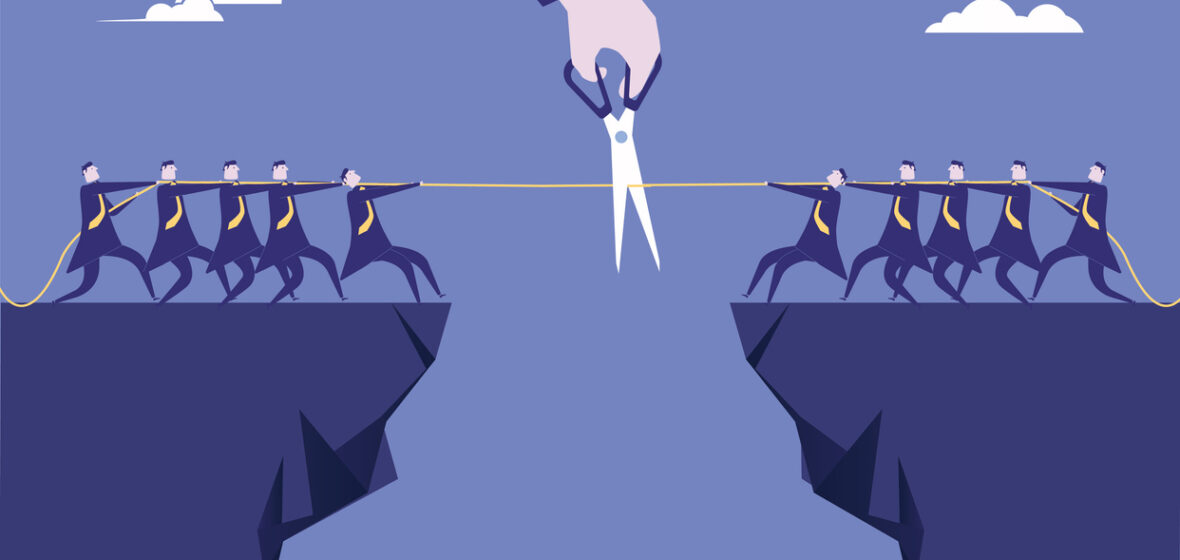Australian workers now have the right to disconnect from work after hours. Whether the legal profession takes advantage depends on an openness to culture change and reimagining client relationships.
In a landmark change to employment law, Australian workers can now refuse to monitor, read or respond to calls, texts, emails and other forms of contact outside working hours, unless that refusal is unreasonable.
The ‘right to disconnect’ is a response to the encroachment of work into personal life and growing concerns about work-related mental health issues linked to stress and overwork.
But what of professions like law where practitioners are expected to work long hours and service demanding clients, and are generally well-renumerated for their trouble – will these new laws make a meaningful difference to lawyers’ working habits?
Some commentators believe this regulatory change will help to balance the advantages of digital flexibility with protections against overwork, but there are concerns about enforceability and the appetite of law firms and employers across the profession to tolerate a cultural shift in the way practitioners work.
Creating better work-life balance
Globally, the right to disconnect is not new. In 2017, France began requiring workplaces to negotiate agreements with their staff on the right to ignore devices after working hours. Similar regulations have since been introduced in Belgium, Ireland, Italy, Philippines, Argentina, Chile, Slovakia, Spain, Mexico and Canada’s Ontario province.
The right to disconnect targets the growing problems of over-connectedness and what’s been dubbed ‘availability creep’. “You’re only a phone call away from your boss and you have your work email set up on your phone, so the boundary between work life and private life has increasingly become blurred,” says Martijn Boersma, an associate professor of work and organisational studies at the University of Sydney Business School, explaining that remote and hybrid work and the experiences of the pandemic have exacerbated the effect.
“It’s harder to distinguish exactly when your workday starts and when it ends. These laws have been introduced to stop that encroachment from negatively affecting people’s wellbeing and personal lives.”
There is evidence that the laws help to protect the wellbeing of workers, with a 2023 Eurofound report finding that 70 per cent of workers in companies with a right to disconnect policy consider the impact to be positive. They report very high levels of job satisfaction and better work-life balance.
The right to disconnect is seen as especially important amid cultures of overwork and burnout. Australian workers are putting in longer working hours and doing more overtime than ever – practices that have become so ingrained that an estimated 30 per cent of people are at high risk of work addition. “These laws have been introduced in many jurisdictions and we’ve not seen a drop in productivity,” Assoc Prof Boersma says.
The laws can also harness the role of technology in enabling flexible work arrangements and facilitating more inclusive workplaces, especially by addressing the disproportionate impact that overwork enabled by over-connectedness has on women compared to men.
“In France, the right to disconnect was explicitly embedded into some gender equity provisions they had around collective bargaining,” says Dr Meraiah Foley, academic director of equity, diversity and inclusion at the University of Sydney Business School.
“The idea was that without appropriate guardrails on the use of technology, it would just compound the existing problem – that if you remove any kind of boundary between the physical office and the home space, then the expectation is you can work everywhere all the time, which has significant downside potential for gender equality at work.
“The right to disconnect laws have origins in this global conversation about how we capitalise on the upsides of technology without entrenching or further exacerbating extreme long hours cultures and expectations.”
Workers have right of no reply
The right to disconnect might sound cut-and-dry but it contains considerable flexibility and discretion. The laws don’t restrict managers from emailing employees at 10pm or making late-night calls. Nor do they it stop colleagues from contacting each other. What they do, in companies of 15 or more employees, is give workers the right not to reply unless their refusal is deemed unreasonable.
“There’s never been any suggestion when this right to disconnect was introduced that everyone was going to be unavailable come five o’clock,” Assoc Prof Boersma says.
In law and other professional services, it’s this grey area and the onus being on the employee to regulate their behaviour that some believe could prove a significant barrier to uptake.
“There is a big question about whether or not these types of laws can and will be effective within elite professions like investment banking, insurance and law, where workers tend not to adhere to minimum standards anyway,” Dr Foley says.
Jesse Shah, CEO at legal recruiter Nrol, which has offices in Sydney, Melbourne, London and Dubai, says long hours remain a fundamental expectation of everyone from junior lawyers to senior partners and any attempt to challenge it is a potential career saboteur.
“If you’re adopting a mentality that people can’t contact you after a certain hour, it’s going to harm your chances of succeeding at a law firm. The people around you and the people more senior to you have put in the time – so they’re not going to make it any easier for you to climb that ladder if you don’t put in the time. It’s an unwritten expectance,” he says.
“I hope it does change but in the near future, if you have that mentality, I don’t see you lasting very long in a firm long or getting any promotions anytime soon.”
Part of a broader cultural shift
Rather than relying solely on the right to disconnect to drive change, there’s increasing recognition that the regulatory change is part of a broader cultural shift that needs to occur within legal workplaces.
An analysis of the right to disconnect across other jurisdictions that is soon to be published in the Journal of Industrial Relations, which Assoc Prof Boersma co-authored, found that in each country that has instigated right to disconnect laws there is a common idea that employers and employees need to work together to find a balance between work and personal time.
“These laws are ultimately there to instigate discussion at a workplace level as to what constitutes acceptable outside of hours contact. It doesn’t mean that you don’t have to pick up the phone when you don’t feel like it – it’s more about initiating those discussions,” Assoc Prof Boersma says.
At Herbert Smith Freehills, Steve Bell, managing partner of the employment, pensions and incentives practice, says the right to disconnect is part of an ongoing dialogue about lawyer workloads.
“It’s unlikely to lead to a dramatic change in the way we deliver services to clients in truth, but it has been part of the conversation we’ve had with staff and the partner leadership team,” he says.
“We haven’t set any timeframes of after this hour is unreasonable and before this hour is reasonable, because it’s going to change matter to matter, perhaps day to day, for the lawyers. The more sensible thing for the partners who are supervising those teams is to have a sense of a dynamic conversation about what that looks like and what it feels like.
“You want people to have careers where what they do is sustainable, and they get enough of a break to bring their best self to work the next day and then the next day and the next day. These laws are an emblem of a sense in society that we need to have some reasonable boundaries about when we’re able to disengage from work.”
Darshana Parekh, an in-house lawyer with 15 years’ experience and a diversity, equity and inclusion consultant, agrees, explaining that the right to disconnect is “heavily embedded in the systems and processes change that’s required in order for the legal profession to get the best out of its people”.
“What I would like to see is the right to disconnect not be seen in a silo, as relying on the right to disconnect law by itself will not result in change,” she says. “It can provide a gravitas as to the why the systems and processes need to change – for example, around things like promotions. What we should be seeing, if it isn’t already in place, is a means of promotion that isn’t based on presenteeism.”
Managing client relationships
There are, however, calls for law firms to provide some instruction to staff about expectations of after-hours contact. Dr Foley says a study published in July in New Technology, Work and Employment, that she co-authored, on how Australian lawyers navigate digital technologies offering greater flexibility but also increasing expectations of constant availability found “it would be helpful to have some instructions from employers or from an industry standard”.
“What these lawyers told us was that there was very little instruction from their bosses at the organisational level or at the industry level about what was appropriate. Do I have to respond to this client at 2am or is it acceptable if I wait 24 hours?” she says.
One of the biggest reasons for this – and, indeed, the elephant in the room when it comes to mitigating heavy workloads in law – is the demands placed on firms by clients. Dr Foley says the shift to more flexible modes of working has “accelerated client expectations and demands about 24/7 availability.”
Fionn Bowd, consulting senior lawyer and CEO of legal recruitment firm Bowd, says worry that a client will take their business elsewhere if a firm isn’t responsive drives many of the problematic work practices that the right to disconnect is attempting to mitigate.
“The problem is that firms operate in a highly competitive environment, and there’s a lot of fear about losing clients if you aren’t available. A lot of times it seems to me that firms believe that the biggest value add they have is their availability. That is the thing that they offer, that they’re always available – that’s their market offering – so they tend to be quite fearful about saying no to clients,” she says.
Bowd believes the same conversations about disconnecting from work happening between law firms and lawyers can be applied to the law firm-client relationship without fear of “instant death.”
“There should be some cultural change happening in the client space, and that creates an opportunity for law firms to try to say: ‘Most of your people have a right to disconnect and we’re in the same boat, so let’s all have a think about how we work together’,” she says.
“There are some quite large law firms that have a culture, and their clients know that they have a culture, of not really being available after six o’clock.”
Bell says he finds clients are more willing to discuss “when things are urgent and when things can be done at a different time, and to have those more fluid discussions”.
“Partners of our firm are also becoming more comfortable having those discussions with clients about the way in which work can be done, all of it in the context of giving them a Rolls Royce experience working with us, but doing it in a way which is sensible,” he says.
Shah believes as top-tier firms begin to have more of these conversations with clients, so too will mid-tier and boutique firms. “I do see change coming and I do see it happening,” he says. “It’s just unfortunately, with law, it takes a little longer for that change to filter through.”
Equally, Bowd and Dr Foley agree, bottom-up pressure from younger practitioners – who are predominately women – will help to normalise conversations around disconnecting from work.
“In the long term, as the generations tick over, this is the kind of change that could fundamentally change the way Australians work in a positive way and send us much more towards some of the European jurisdictions where people have a much better quality of life,” Bowd says.




